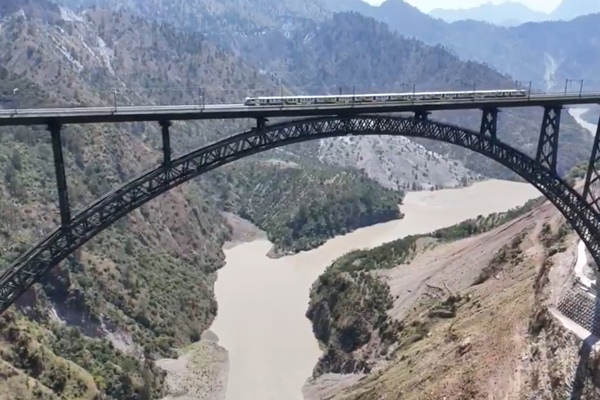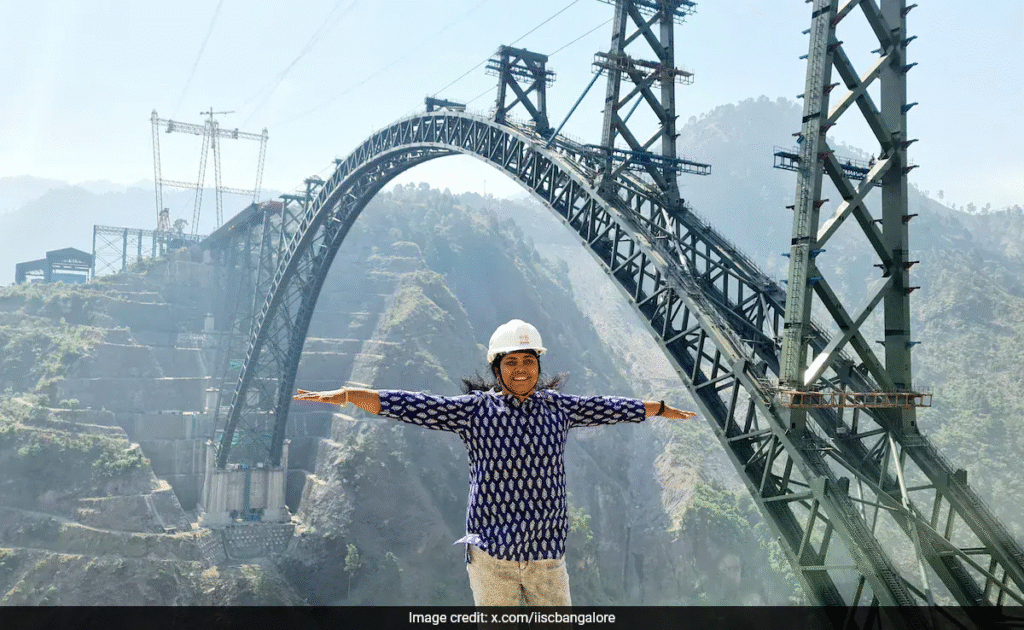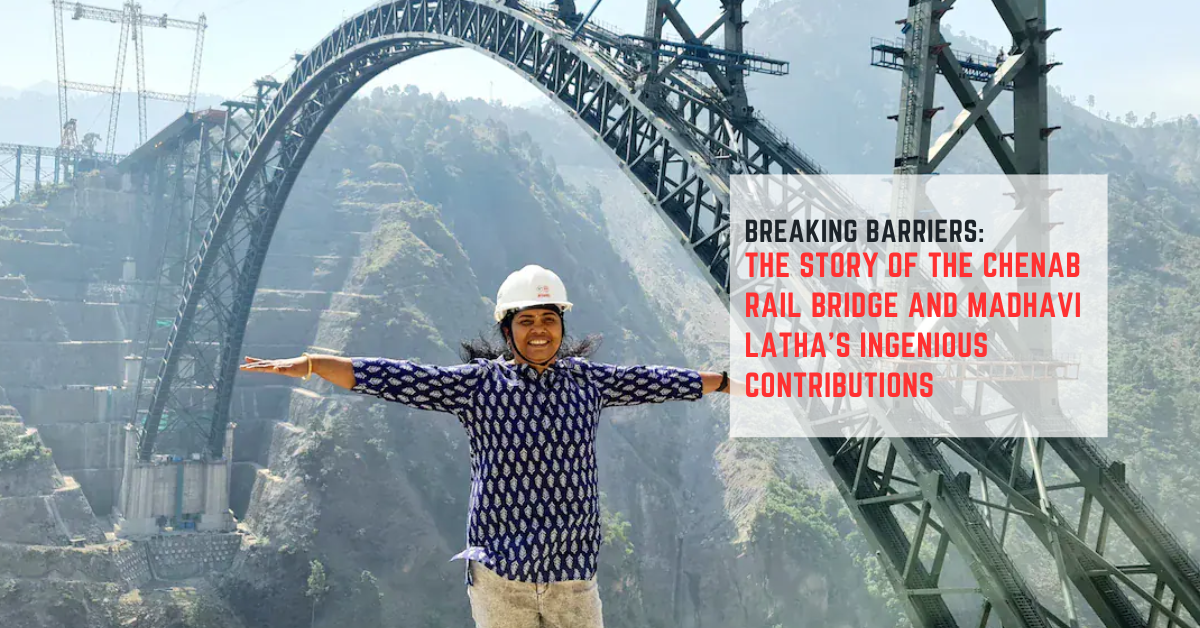Explore how the Chenab Rail Bridge and Madhavi Latha revolutionized Indian engineering. Discover the story behind the world’s highest railway bridge and the brilliant woman who made it possible.
Table of Contents
How the Chenab Rail Bridge and Madhavi Latha Redefined Engineering Excellence
The Chenab Rail Bridge and Madhavi Latha represent two unparalleled symbols of India’s engineering brilliance. Rising 359 meters above the riverbed, the Chenab Rail Bridge is the world’s highest railway bridge, a project built on strength, innovation, and dedication. And behind its solid foundation stands a woman of resilience—Professor Madhavi Latha—a leading geotechnical engineer whose work has shaped its success.

Chenab Rail Bridge: A Global Landmark of Engineering
Constructed over the Chenab River in Jammu and Kashmir, this bridge connects Kauri and Bakkal, forming a vital link in the Udhampur–Srinagar–Baramulla Rail Link (USBRL). The Chenab Rail Bridge has been engineered to withstand:
- Earthquakes
- Winds up to 266 km/h
- Sub-zero temperatures down to -40°C
Its sheer size and complexity make it one of India’s greatest civil engineering achievements.
Meet Madhavi Latha: The Woman Behind the Foundation
From a small village in Andhra Pradesh to the labs of IISc Bengaluru, Madhavi Latha Gali is the visionary behind the geotechnical solutions that made the Chenab Rail Bridge possible. In 2005, she conducted the initial geological and soil surveys, and over the next 17 years, led as the chief geotechnical consultant for the project.

What Did Madhavi Latha Do on the Chenab Bridge?
- Tackled slope stability in highly seismic zones
- Developed rock reinforcement techniques for landslide-prone terrain
- Ensured long-term stability for foundation works in extreme weather
From Humble Beginnings to National Icon
Born in Yedugundlapadu, Madhavi Latha was the first in her family to pursue higher education. Though she dreamed of being a doctor, financial limitations led her to civil engineering. Her academic journey:
- B.Tech – JNTU Andhra Pradesh
- M.Tech – NIT Warangal
- Ph.D. – IIT Madras
- Postdoctoral Research – IISc Bengaluru
Now, she serves as a professor at IISc and has published 100+ research papers in geotechnical engineering
Awards & Accolades of Madhavi Latha
- Best Woman Researcher in Geotechnical Engineering – IGS
- Outstanding Researcher Award – IISc
- SERB POWER Fellowship – Govt. of India
- Woman Achiever Award – Karnataka Book of Records
Quick Facts About the Chenab Rail Bridge
Q: Which train crosses the Chenab Rail Bridge?
A: The Vande Bharat Express recently completed its maiden trial from Katra to Srinagar via this bridge.
Q: Why is the Chenab Bridge single-track?
A: Due to height and structural optimization, it uses a single-track design for enhanced safety.
Q: Dams on Chenab River?
A: Salal Dam, Baglihar Dam, Dul Hasti Dam – all serve hydroelectric purposes.
Q: Old name of Chenab River?
A: Known as Asikni in Rigveda and Chandrabhaga in ancient times.
Q: Why is Chenab Rail Bridge famous?
A: It’s the highest railway bridge in the world, even taller than the Eiffel Tower.
Why the Chenab Rail Bridge and Madhavi Latha Inspire a Nation?
The Chenab Rail Bridge and Madhavi Latha are not just names—they’re symbols of resilience, brilliance, and breaking barriers. Where one stands tall as an engineering monument, the other shines as a beacon for women in STEM.
Let’s not forget: Madhavi Latha didn’t just build a bridge—she built a pathway for generations of engineers to come.
Final Thoughts
The Chenab Rail Bridge is more than a feat of engineering—it’s a story of visionaries like Madhavi Latha, who worked behind the scenes to make the impossible possible. Her journey proves that true engineering is not just about concrete and steel—it’s about courage, vision, and unyielding dedication.
Coming Soon: In our next blog, we’ll explore other lesser-known Indian women engineers who’ve contributed to the nation’s biggest infrastructure projects.


1 thought on “Incredible Feat: How the Chenab Rail Bridge and Madhavi Latha Redefined Engineering”